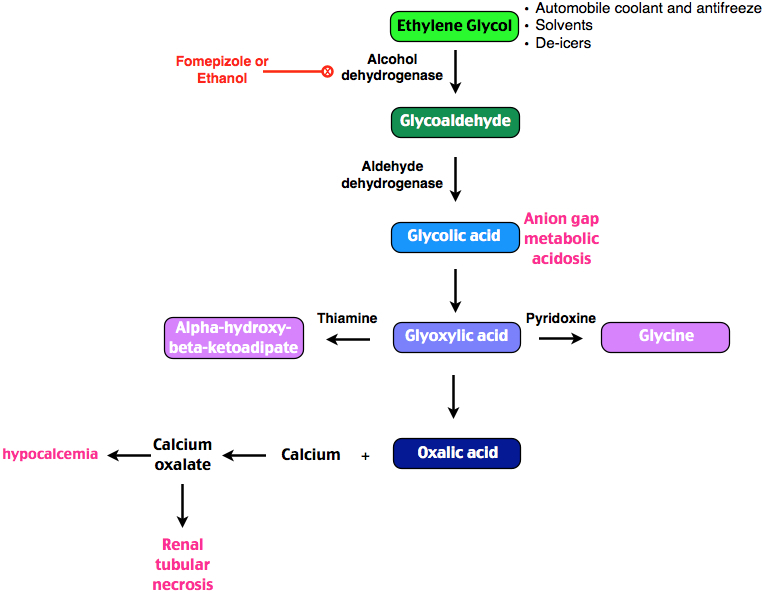Holidays can be a tough time. They can even drive one to the bottle. But which bottle? If you suspect your intoxicated patient may have ingested an alcohol other than ethanol but want some quick answers in the form of serum labs tests (aka you do not want to wait until next Christmas for levels to result), then, in addition to checking the osmolar and anion gaps, check the calcium level.
[spacer height=”20px”]Ethylene glycol, notoriously found in anti-freeze solutions, causes the formation of calcium oxalate crystals therefore often causing a significant drop in serum calcium levels. Oxalate crystals are observed on initial urinalysis in only about 50% of patients but are likely present in more, deposited in other tissues such as those within the cardiac, pulmonary and neurological systems. A caveat: calcium levels may not always be reduced, particularly in an acute ingestion as it takes around 4+ hours to form crystals, but if they are, this may point you toward ethylene glycol.
[spacer height=”20px”]And remember, once diagnosed, start fomepazole ASAP as it can lead to a rather rapid resolution of your patient’s acidosis (3+ hours) and can reduce kidney injury if initiated prior to any creatinine bump. Next step, hemodialysis.
[spacer height=”20px”]Image taken from Rosh Review
http://www.aafp.org/afp/2002/0901/p807.html
http://www.sciencedirect.com/science/article/pii/S0379073804007686

